How hard is the Cape to Cape Track
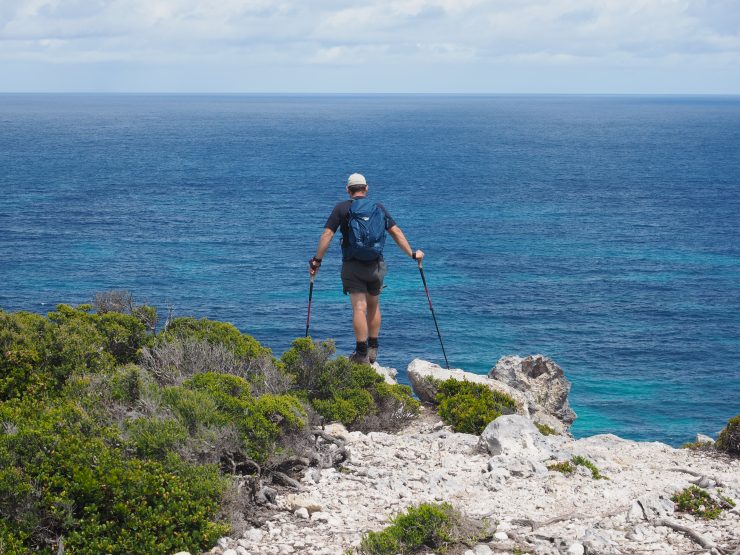
How hard is the Cape to Cape Track
Posted on
So you want to walk the Cape to Cape Track
How hard is the Cape to Cape Track? Nestled in the sublime Margaret River region of WA, this is no ordinary hike—it’s a 135-kilometre journey between Cape Naturaliste and Cape Leeuwin that promises the kind of natural beauty that’ll make anyone who follows your Facebook feed green with envy. Think pristine beaches that meet gravity-defying limestone cliffs kind of experiences.
However, before you set out, asking the question ‘How hard is the Cape to Cape Track?‘ will ensure you set forward on the right foot.
Great walks should be an adventure for everyone—from trail veterans to total newbies. The Cape to Cape is no exception, so let’s dive into why it’ll have you pinching yourself and answer that burning question.
How long should I expect to walk?
Although this isn’t just any walk in the park — beautifully clear beaches, lofty cliffs, and lush forests make this a making up the backdrop of this epic journey.
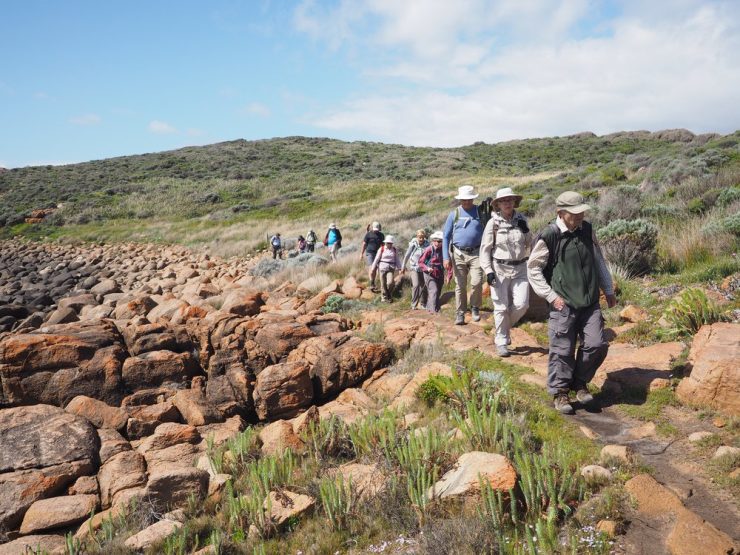
But hang on, what’s the daily mileage here? Expect to conquer anywhere from a breezy few hours to a solid 20-30 kilometres, depending on how you fancy your day. Lots of beach walking ahead, especially around the major beaches.
A tip is not to measure the physical distance, but to consider the terrain involved, your fitness level, and how often you will stop.
What is the Level of Fitness Required for Completion?
You won’t need to be a gym bunny, although note it still isn’t a Sunday stroll. We’re talking soft sand, a lot of beach walking, rocky trails, and even some river crossings for good measure.
A reasonable level of fitness is your golden ticket here. Think strength, balance, and a smidgen of endurance—just enough to keep you feeling sprightly.
We have an amazing article on how to prepare for a hike, which you can read here.
However, for some quick tips:
- Start Slow: Don’t rush into rigorous training; start with shorter walks and gradually increase distance.
- Low-Impact Exercises: Consider swimming or cycling on non-walking days to build stamina without stressing your joints.
- Strength Training: Simple body-weight exercises like squats and lunges can help prepare your legs for the trail.
- Balance Drills: Simple exercises like standing on one foot or walking heel-to-toe can improve your balance, crucial for uneven terrains.
- Flexibility: Incorporate stretching into your routine to maintain a good range of motion, which can be especially helpful on rocky paths.
- Consult Your Doctor: Always wise to check in with your GP before starting any new fitness routine, especially if you have existing health conditions.
- Rest Days: Schedule days off for your body to recover.
- Hydration and Nutrition: Practise staying hydrated and fuelled during your training walks to find out what sits well with your stomach.
Remember, each body is different, so listen to yours and adjust as necessary.
Oh, and a hot tip? Get those legs prepped with some prior walks to test your stamina. That way, you’re not huffing and puffing halfway through your West Australian adventure!
If you choose to do one of our guided tours of the Cape to Cape track, our expert guides have your back. They aren’t just well-versed in local lore; they’re also your personal cheer squad.
The Landscape and Terrain
Sometimes, the terrain can be challenging, with soft sand, rocky coastal trails, and occasional river crossings.
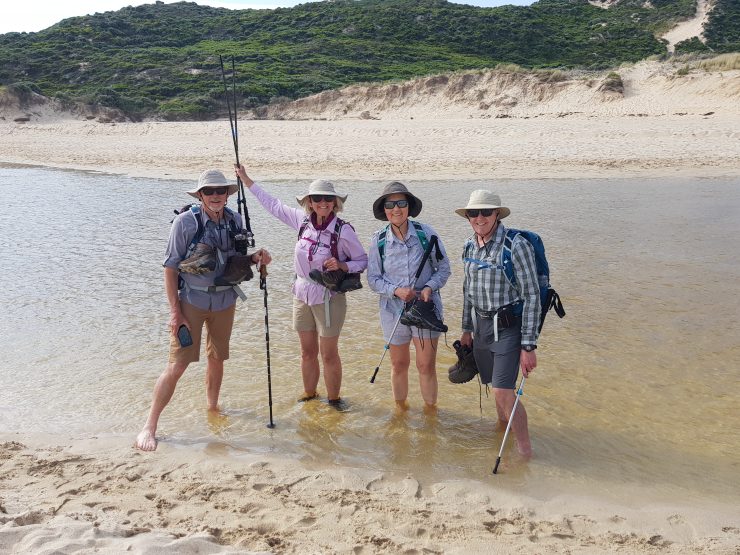
The key to navigating all these different terrains is wearing the right hiking boots.
Selecting the perfect hiking boot is no mere frivolity—it’s a make-or-break choice that will haunt or elevate each step of your trail odyssey. The litmus test? Saunter to the shop, letting your feet swell a tad; it’s the real-world prep your feet need for the try-on. Forget fashion; go for fit. Test prospective boots on inclines and declines, as the true character of a boot emerges not on flat ground, but when gravity tugs at your soles. Prioritise durability, waterproofing, and ankle support, often the unsung heroes of any successful trek. Quality trumps price—your feet will thank you for the splurge.
If you’re after a full ‘bachelors in boots’, take a peek at one of our articles dedicated to boots.
Soft Sand Beaches and Rocky Outcrops
Walking along the soft sand beaches and navigating rocky outcrops on the Cape to Cape Track presents its own set of challenges and highlights. While the coastal trail offers stunning views of the Indian Ocean, hikers must be prepared to face the unique terrain that can test both their endurance and foot health.
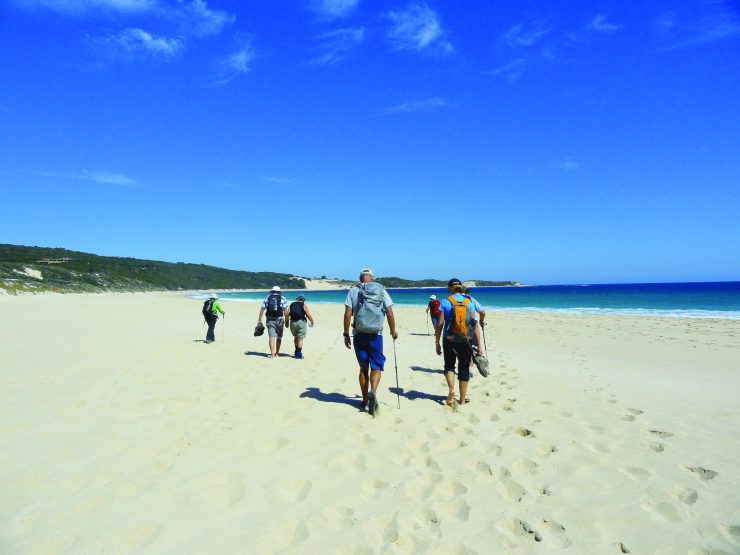
The soft sand beaches can be particularly challenging to walk on, as each step requires extra effort to push through the loose surface. This can quickly tire hikers and drain their energy reserves. The uneven and unstable nature of the sand also puts an increased strain on the feet and lower limbs, potentially leading to blisters and foot discomfort.
In addition to the sandy beaches, the track also includes rocky outcrops that require careful navigation. These geological formations, such as the iconic Moses Rock and Sugarloaf Rock, add an element of excitement to the journey. Hikers must tread carefully to avoid slipping on uneven surfaces and safely manoeuvre around the rugged terrain.
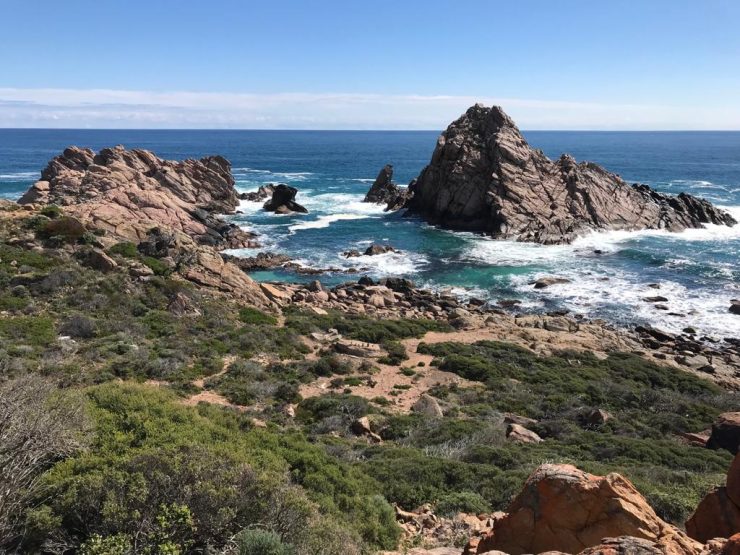
It is crucial for hikers to be mentally prepared for the physical demands that come with walking on soft sand and navigating rocky sections of the trail. Building endurance through regular exercise and gradually increasing walking distances beforehand can help mitigate some of the challenges. Proper footwear, such as sturdy hiking boots, can also provide better support and protect against foot injuries.
Despite the challenges, the soft sand beaches and rocky outcrops along the Cape to Cape Track offer unique and memorable experiences. The contrasting landscapes and geological formations highlight the natural beauty of the Margaret River Region, making the journey truly rewarding for those willing to take on the adventure.
Secluded Beach Sections – inspiring but tricky
The Cape to Cape has many secluded beach sections, and it’s what makes the walk so varied. Here is a list of our favourites and what to expect.
- Smiths Beach: Located near Yallingup, this beach is more secluded during weekdays and offers stunning views.
- Gnarabup Beach: This hidden gem is near the town of Prevelly and is less frequented than its neighbouring beaches.
- Redgate Beach: Known for its dramatic cliffs and scenic beauty, it’s generally less crowded than other spots.
- Cosy Corner: As the name suggests, this is a quaint, cosy beach spot ideal for some solitude.
- Boodjidup Beach: Situated south of Margaret River, this beach offers a long stretch of white sand and is often deserted.
- Moses Rock Beach: This beach is a bit off the beaten track and provides an excellent opportunity for seclusion, especially outside of peak seasons.
- Honeycombs Beach: Located between Moses Rock and Gracetown, it’s often skipped by most tourists, providing a more secluded experience.
- Wilyabrup Beach: Known for its cliffs, it’s a less frequented spot ideal for those looking to avoid crowds.
- Hamelin Bay: Famous for its stingrays, the beach itself is often quiet and offers a peaceful escape.
- Conto’s Beach: This beach is located near the Leeuwin-Naturaliste National Park and is popular among locals, but less so among tourists, making it a secluded choice.
- Foul Bay: As one of the most southern points on the trail, this beach is often deserted and offers a sense of solitude.
- Boranup Beach: Tucked away amidst the Karri forests, this beach offers spectacular isolation.
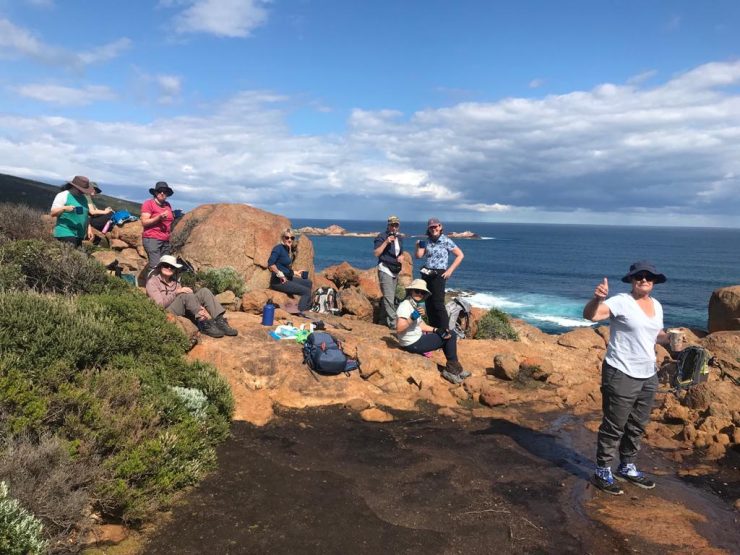
Navigating the Necessities: Water, Loo Rolls, and What to Stash in Your Proper Hiking Backpack
Along the Cape to Cape Track, it’s not just about the views; it’s also about the thoughtful amenities. Strategically placed water tanks pepper the trail, letting you refill and hydrate. Mind you, treat or boil this water first—it’s a wilderness out there.
Drop toilets grace free campsites like the Contos campground, but don’t count on a fully-stocked loo. Bring your own toilet paper for those can’t-wait moments. Beyond hydration and basic hygiene, ensure you’ve got a proper hiking backpack filled with trail essentials, from water bottles for the stretches between tanks to tailored gear for your multi-day jaunt.
Preparedness here isn’t just wise, it’s an invitation to fully embrace the Cape to Cape’s extraordinary landscapes, fuss-free.
Lay Your Hat: From Camps to Caves House, Your Cape to Cape Stays Sorted
Embarking on the Cape to Cape? From national parks to luxury hotels, the trail offers plenty of accommodation options. Free campsites with basics—think toilets and rainwater tanks—provide a budget option for a night under the stars. More of a glamper? Yallingup, Prevelly, and Hamelin Bay Caravan Parks not only give you a patch of earth, but also hot showers and laundry facilities. Book ahead, especially when the mercury rises.
For a roof over your head, holiday houses and huts pepper the trail, offering a range of options from rustic to deluxe. And if you’ve got dinner meals and lunch plans on mind, venture off-track to nearby restaurants or the iconic Caves House. So, whether you’re donning your best hiking boots or seeking creature comforts, your Cape Walk Accommodation is sorted. Just remember—plan, book, and enjoy.
Mind Your Step: Insider Tips for Cape to Cape Safety
Navigating the Cape to Cape? Right, it’s not just a walk in the park. From steep sections to sandy beaches, the terrain is as diverse as it demands. Check the current track conditions and pack the essentials: map, compass, and a first aid kit. Weather’s a fickle friend here—sudden showers, brisk winds, you name it. So, glance at the forecast and layer up.
Connection sketchy? A Locator Beacon’s your safety net. Stash litres of water in your proper hiking backpack, and always let someone in on your ETA. In short, a safe hike is a happy hike. So, gear up and get going, but mind your step, alright?
Weather Smarts: When to Walk Cape to Cape
The Margaret River Region experiences a Mediterranean climate, making it a popular destination for visitors and outdoor enthusiasts. The best time to walk the Cape to Cape Track is during the spring and autumn seasons, when the weather is typically mild and pleasant.
Spring (September to November) brings moderate temperatures ranging from 15°C to 25°C (59°F to 77°F), with low humidity and occasional rainfall. This season showcases the region’s stunning wildflowers in full bloom, adding vibrant colors to the coastal landscape.
Autumn (March to May) offers similarly mild temperatures, ranging from 15°C to 25°C (59°F to 77°F). The region experiences more stable weather conditions during this season, with less rainfall and tranquil coastal breezes.
Summers (December to February) can be hot, with temperatures soaring above 30°C (86°F), making the Cape to Cape Track a more challenging endeavor. It is important to carry ample water supplies and be aware of the potential for bushfires during this time.
Winter months (June to August) bring cooler temperatures ranging from 8°C to 18°C (46°F to 64°F). While rainfall is more common during this season, the region’s coastal scenery still remains breathtaking.
We recommend planning your walk during spring or autumn for your Cape to Cape Track adventure. You’ll enjoy optimal weather conditions and stunning natural beauty in the Margaret River Region.
Protecting Yourself from Sunburn and Dehydration
When embarking on the Cape to Cape Track, it is crucial to prioritise your safety and well-being by protecting yourself from sunburn and dehydration. The extreme heat that can be experienced along the track makes it imperative to carry sufficient water supplies.
The Western Australian climate can be unforgiving, with temperatures soaring above 30°C (86°F) during the summer months. This intense heat, combined with the physical exertion of hiking, increases the risk of dehydration. It is recommended to carry at least two litres of water per person per day, and to replenish your water bottles at designated water tanks along the track.
In addition to staying hydrated, it is essential to take measures to protect yourself from sunburn. The region is known for its pristine beaches and long stretches of exposed coastline, leaving hikers vulnerable to the sun’s harmful rays. Applying sunscreen with a high SPF, wearing a wide-brimmed hat, and covering exposed skin with lightweight, long-sleeved clothing are all essential sun protection measures to consider.
By taking precautions against sunburn and dehydration, you can ensure a safer and more enjoyable experience while exploring the breathtaking beauty of the Cape to Cape Track.
Guided Cape to Cape Track tour
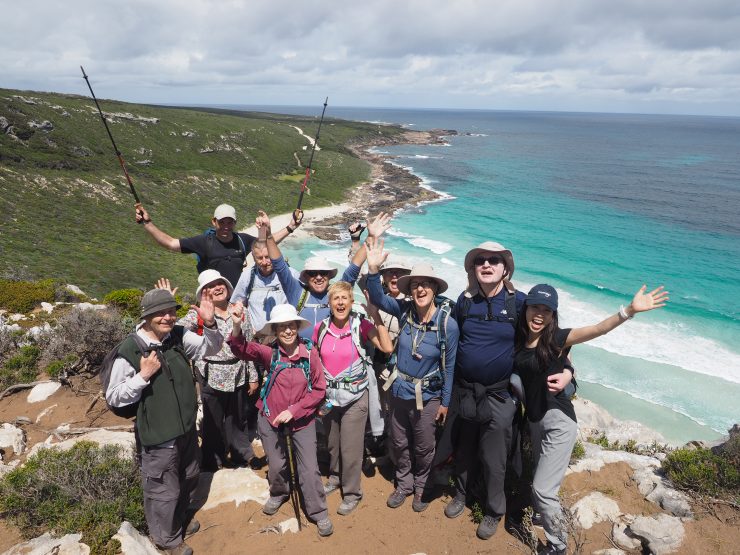
Ready to turn your Cape to Cape dream into reality? Our guided tours offer the perfect blend of adventure and peace of mind. With expert guides to navigate and enlighten, you focus on the journey, not the logistics. Book your tour today, and let us help you conquer this incredible Australian trek, one breathtaking step at a time. Reserve your spot on the 8-day Cape to Cape Guided Walking Tour today!



